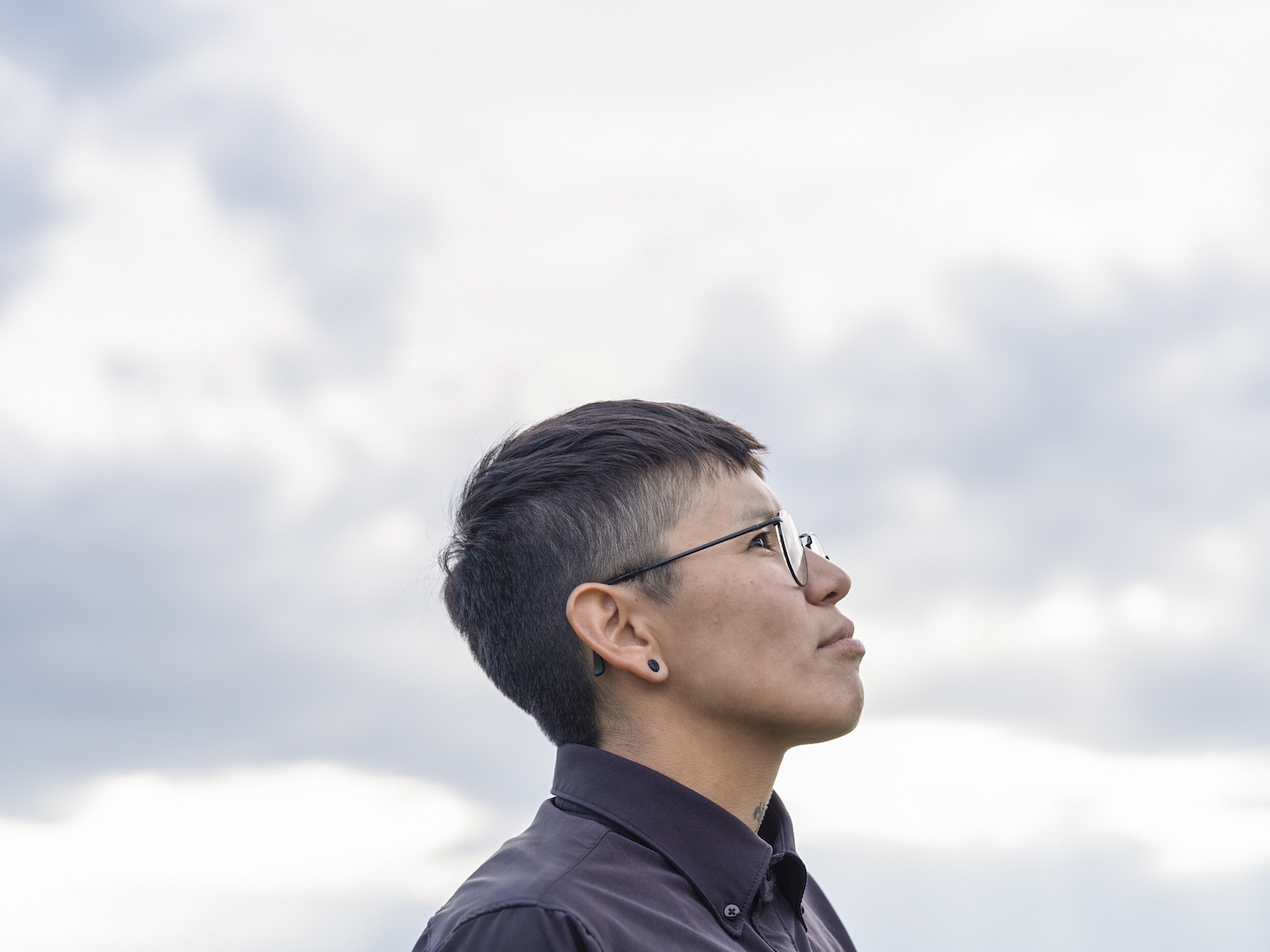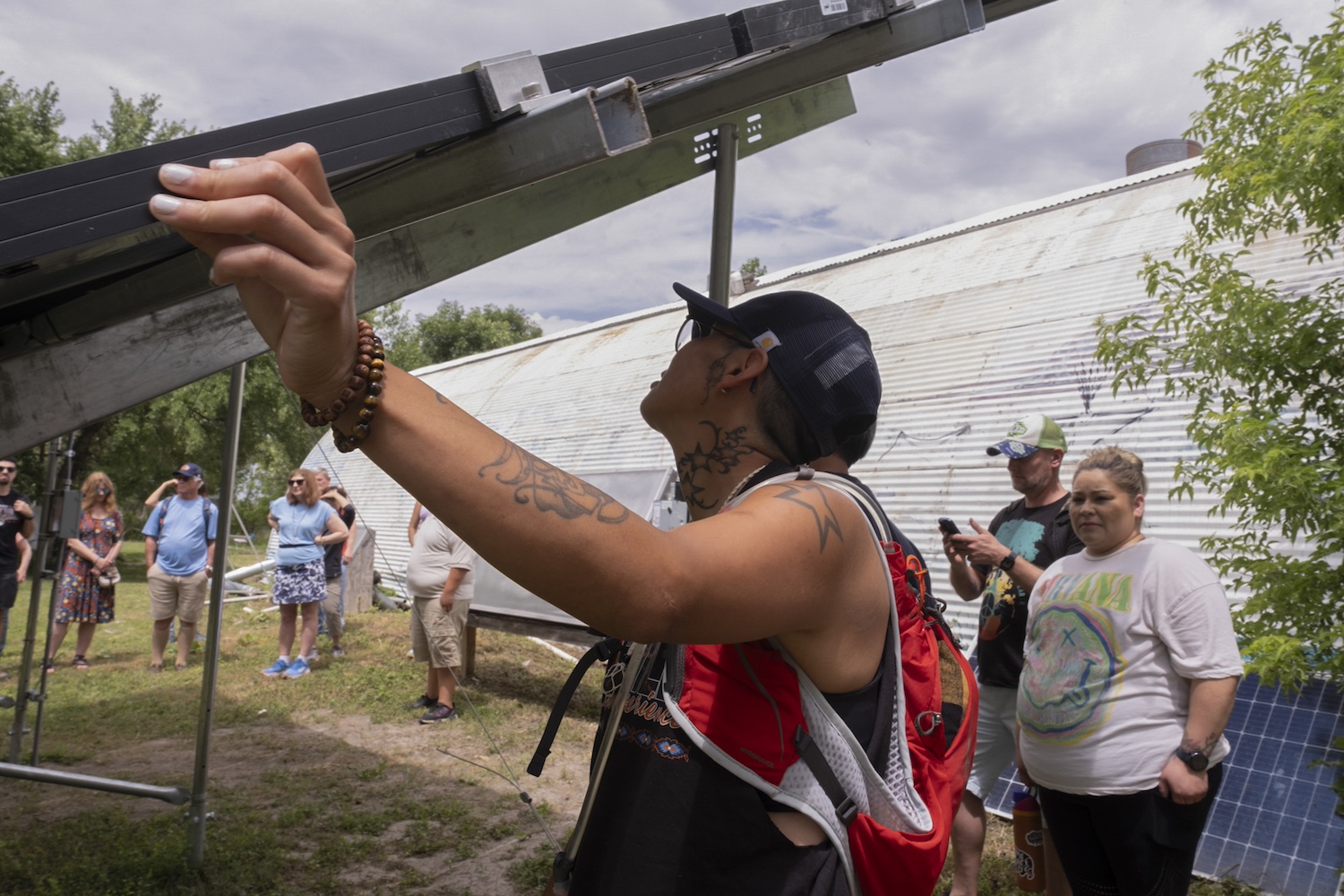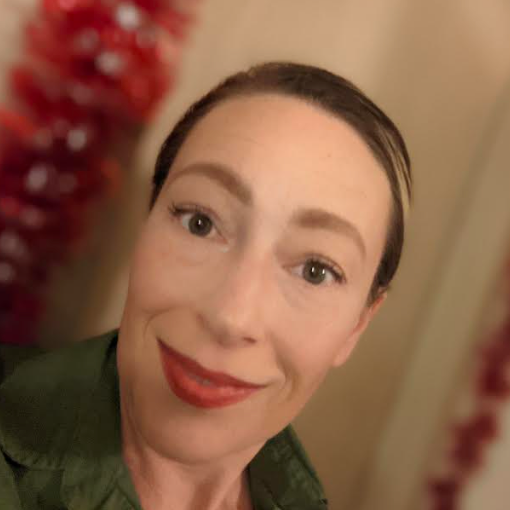
As a solar program coordinator for Indigenized Energy, Charlee Rising Sun trains incoming solar professionals looking to become installers. (Image: Nina Robinson)
At the end of 2024, Dream.Org launched the Make It Real photojournalism series to highlight the challenges and triumphs of those fighting for a more sustainable and equitable future in the United States. We're collaborating on a series of TriplePundit articles to share these stories. This is one of several features centered on the climate leaders empowering Native communities to reclaim energy sovereignty while building resilience.
Solar installation may be a male-dominated field, but that didn’t stop Charlee Rising Sun. As one of relatively few female installers, she helped forge the way for other women, especially Indigenous women, in the field. Her groundbreaking work is showcased in Dream.Org's Make it Real photojournalism campaign featuring U.S. climate action advocates making a difference in their communities. When asked what she is most proud of as a climate leader, Rising Sun responded modestly: “Just being a woman in solar and starting out as an installer.”
When Rising Sun got her start as a solar installer, she didn’t see any other women in her position. While there were women in solar, they weren’t climbing up on roofs like she was. Only 5.5 percent of solar installers are women, according to research from the career site Zippia. A mere half of a percent of the total number of installers are Indigenous.
Naturally, being the only woman on the job site wasn’t without its challenges. Rising Sun started out mounting solar panels on roofs in Utah. While her co-workers were encouraging, “I did notice that they had a little doubt in me, just because I was a woman and my stature isn’t the biggest,” she said. “They were kind of a little iffy, but once they [saw] that I could do it, then they kind of laid off me.”

But Rising Sun didn’t let any of those experiences discourage her. She made it a point to keep going and prove she knew what she was doing. If she hadn’t, she wouldn’t be where she is today, she said.
Rising Sun has since become a solar program coordinator for Indigenized Energy, an Indigenous-owned and operated organization dedicated to bringing energy sovereignty to tribal nations through renewable energy, where she trains incoming solar professionals hoping to follow in her footsteps. She’s happy to help her community learn more about solar and looks forward to helping others become installers — especially other women.
When launching a pair of new projects with the Chippewa Cree and Oglala Sioux Tribes, “quite a few women” showed interest in learning about the program, “which made me proud,” Rising Sun said.
During this outreach, she met an Oglala Sioux woman who was interested in becoming a solar installer. She was excited to see from Rising Sun’s example that women could be installers.
“Her stature was even a little tinier than mine, so it made me happy and proud to see that she wanted to do the same thing that I was doing,” Rising Sun said. “Now she's out there doing it … Even if it's just one woman, I feel like I'm doing my job.”
Rising Sun is excited to see more women taking to solar, especially with the launch of the Bridging Renewable Industry Divides in Gender Equality (BRIDGE) program at Red Cloud Renewable — the same job training center she attended before becoming an installer. The program, which received funding from the Department of Energy’s Solar Energy Technologies Office, has certified 13 Indigenous women as solar installers since last fall.
The need for a solar training program for women became evident to John Red Cloud, a Red Cloud Renewable board member, upon reviewing the 2021 Interstate Renewable Energy Council census. The census demonstrated that both women and Indigenous people are underrepresented in the industry. “[When] you put those numbers together, it comes out to less than half a percent of the entire solar workforce … were Native women,” he told 3p. “So I thought, there's really an opportunity there.”

After digging deeper into why more Indigenous women aren’t working in solar, Red Cloud found the cost of childcare often held them back. In response, the BRIDGE program offers free childcare.
The inspiration for BRIDGE’s childcare services comes from Jan, one of the first Indigenous women Red Cloud saw entering the solar field. She got into solar installation after seeing her grandparents burn candles and kerosene because they didn’t have access to electricity, and the training program she attended allowed her to bring her young son, which facilitated her success.
“That was kind of the spark,” Red Cloud explained. “The inspiration was to see others find their way, other Native American women, and use these funds. Because being a mother, a life-giver, that’s an amazing thing, and it shouldn’t stand in the way.”
BRIDGE graduates have an 85 percent job placement rate so far, Red Cloud said. While this is a high level of placement, he would like to see everyone who is certified find employment in the industry.
Unfortunately, solar companies often require installers to move off the reservation to be closer to worksites, and that doesn’t work for everyone. But he is hopeful that as more tribal nations develop their own solar programs with partners like Indigenized Energy, those graduates will be able to help with installations on their reservations.
As a single woman without children, Rising Sun recognizes she didn’t face some of the barriers that other women have. She traveled to different parts of the country as a solar installer and was able to go wherever the jobs took her. But she encourages other women of all backgrounds to take the chance on themselves and the growing solar field.
“I think just being a woman in general is powerful enough because they're strong in nature,” she said. “To see other women succeeding and installing, I think it’s just empowering to other women, and it would just be awesome to see.”
Editor's Note: An earlier version of this story indicated that Charlee Rising Sun got her start as a solar installer with Indigenized Energy. While she works for Indigenized Energy now, her first solar roles were with other companies. The story was updated on February 17, 2025, to reflect this, as well as to correct the name of the woman who ultimately inspired the BRIDGE program.

Riya Anne Polcastro is an author, photographer and adventurer based out of Baja California Sur, México. She enjoys writing just about anything, from gritty fiction to business and environmental issues. She is especially interested in how sustainability can be harnessed to encourage economic and environmental equity between the Global South and North. One day she hopes to travel the world with nothing but a backpack and her trusty laptop.














